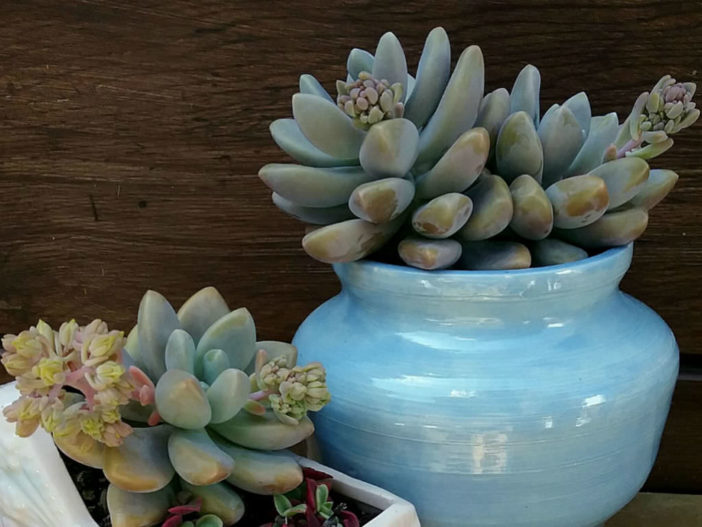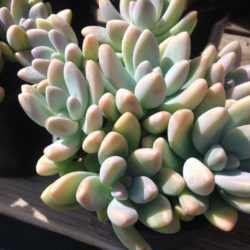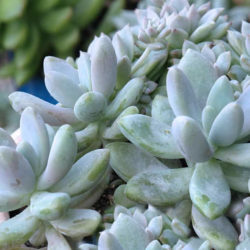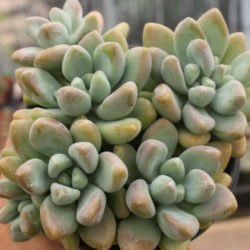Scientific Name
×Graptosedum 'Blue Giant'
Common Name(s)
Donkey Tail
Synonym(s)
×Sedeveria 'Blue Giant'
Scientific Classification
Family: Crassulaceae
Subfamily: Sempervivoideae
Tribe: Sedeae
Nothogenus: ×Graptosedum
Description
×Graptosedum 'Blue Giant', also sold as ×Sedeveria 'Blue Giant', is a succulent plant with fleshy, blue-green leaves surrounding long, thick stems. The leaves take on a rosy tint in colder temperatures and when exposed to bright sunlight. They have a thick powdery coating. The stems are initially upright, becoming decumbent as they grow.
The small, star-shaped flowers have five yellow petals and appear in clusters on long stalks, usually in spring.
Origin
×Graptosedum 'Blue Giant' is an intergeneric hybrid resulting from a cross probably between Graptopetalum amethystinum and Sedum treleasei.

Hardiness
USDA hardiness zone 9a to 11b: from 20 °F (−6.7 °C) to 45 °F (+7.2 °C).
How to Grow and Care
When growing Sedum, keep in mind that Sedum plants need very little attention or care. They will thrive in conditions many other plants thrive in but do just as well in less hospitable areas. They are ideal for that part of your yard that gets too much sun or too little water to grow anything else. A common name for Sedum is Stonecrop because many gardeners joke that only stones need less care and live longer.
Sedum is easily planted. For shorter varieties, simply laying the plant on the ground where you want it to grow is usually enough to get the Sedum plant started there. They will send out roots from wherever the stem touches the ground and root itself. If you want to ensure that the plant will start there, add a very thin covering of soil.
You can break off one of the stems for taller Sedum varieties and push it into the ground where you want to grow it. The stem will root very easily, and a new plant will be established in a season or two.
See more at How to Grow and Care for Sedum.
Links
- Back to nothogenus ×Graptosedum
- Succupedia: Browse succulents by Scientific Name, Common Name, Genus, Family, USDA Hardiness Zone, Origin, or cacti by Genus
Photo Gallery
Click on a photo to see a larger version.


